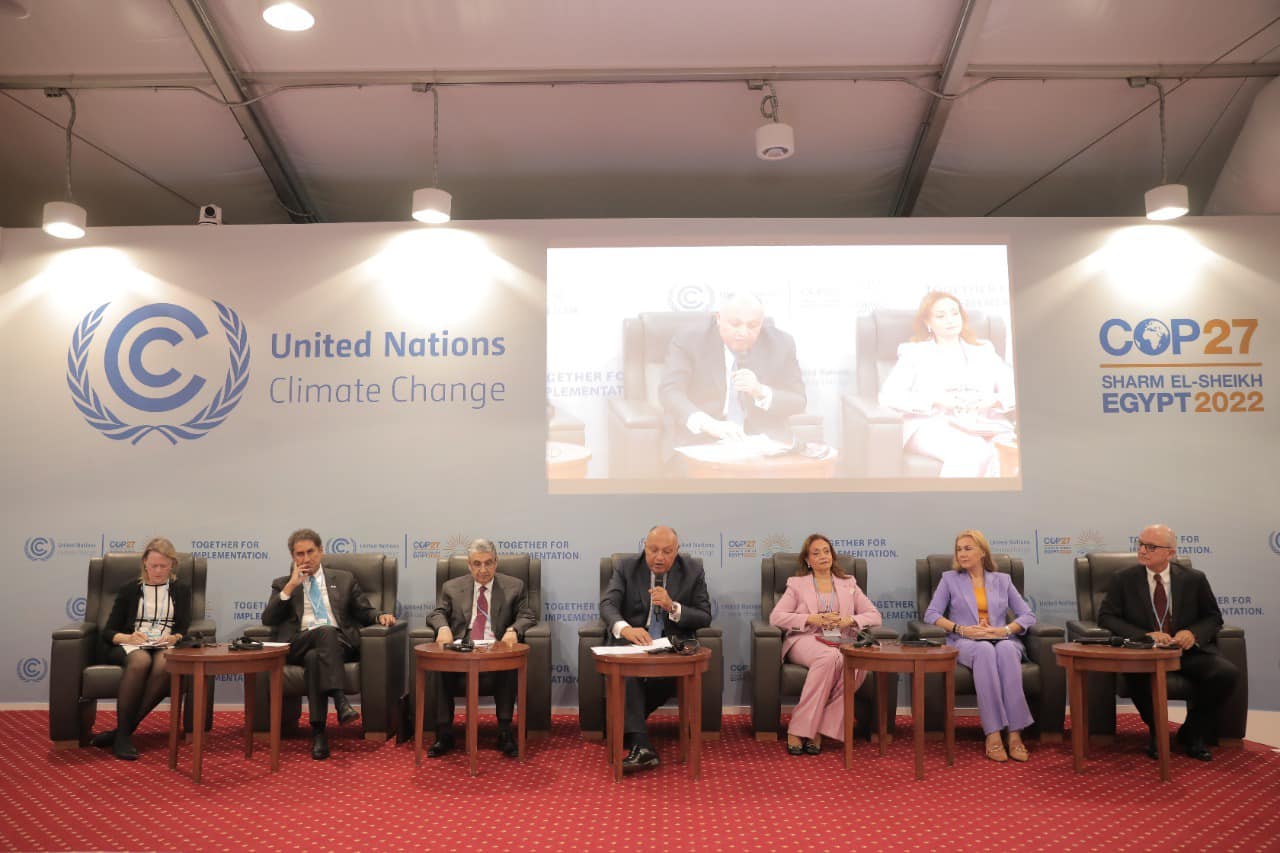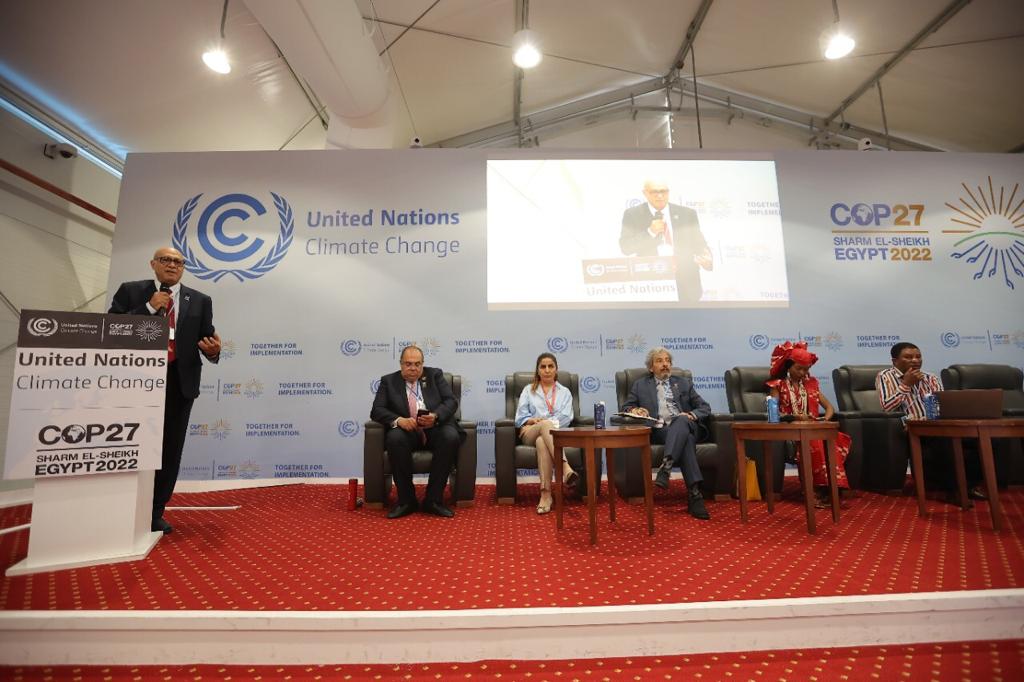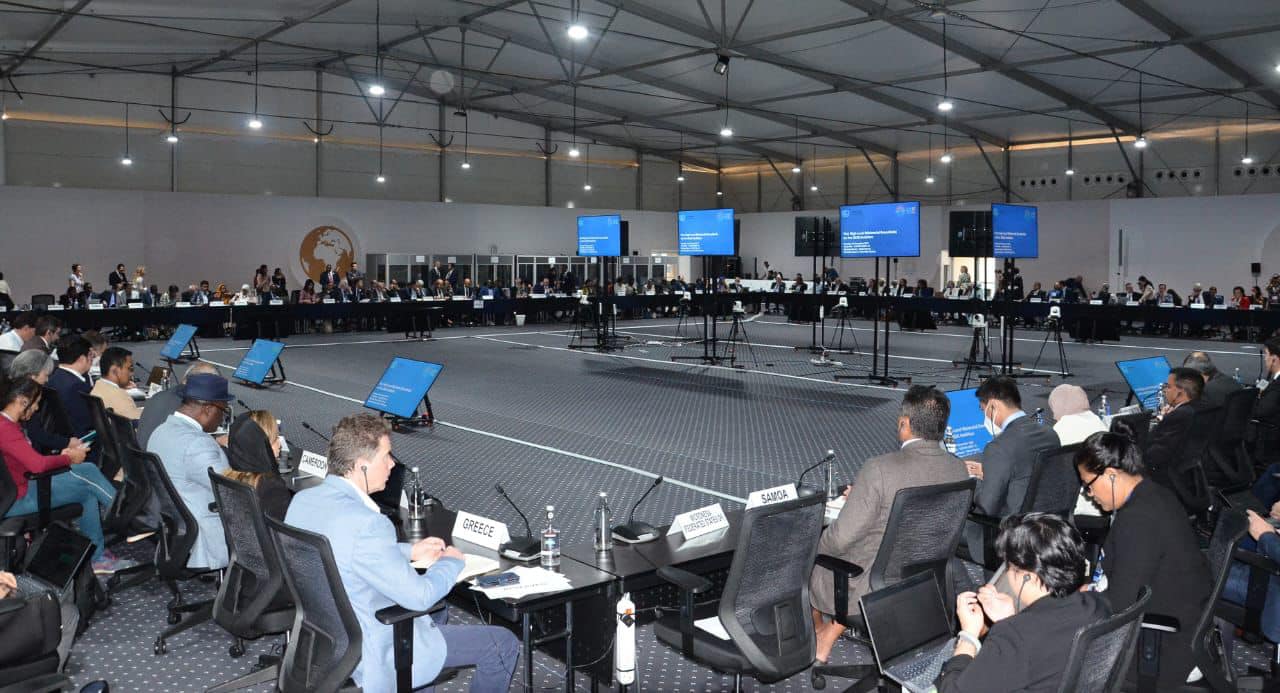
On November 15, 2022, the COP27 Presidency initiative to present pathways for an Africa Just and Affordable Energy Transition Initiative (AJAETI) was launched at Energy Day. The initiative focuses on solutions to help Africa overcome the energy transition dilemma by identifying risks, and opportunities, and empower the critical enablers that are required to succeed.
COP27 Energy Day facilitated discussions on key elements facing the energy sector. The discussions included the role that renewables, smart grids, energy efficiency and energy storage may play within a comprehensive energy ecosystem that would evolve and transform the energy sector for a just energy transition.
Commenting on Energy Day, COP27 President H.E. Shoukry said: “Energy is one of the most carbon-intensive sectors in any given economy, making it one of the most important areas to effect meaningful mitigation measures that contribute to addressing climate change and transitioning to a green economy for the future. Science is clear: global emissions need to be reduced by half by 2030, reaching net-zero by 2050. To achieve this, we need to invest in new sources of energy that are clean, affordable, accessible, sustainable, and reliable.”
Ministers of energy, leaders of development financial institutions and energy security experts debated ways to address the current energy crisis, and long-term pathways to transition away from a reliance on fossil fuels. Part of the discussions centered on strategies countries can adopt to improve energy security while advancing the transition to a low-carbon economy.
The importance of innovation and technology in enabling the transition to low-carbon energy systems featured during the day. Technical solutions for electricity systems, such as, battery storage, smart grids were also discussed.
Sessions during the day included:
- Innovative Solutions and Enabling Environments that discussed the role of digitalization and technology involved in electricity grids, by emphasizing the necessary policies and incentives to aid infrastructure investment. Panelists reinforced innovative approaches utilized must be proven to be economically viable and easy to implement – to aid in the swift renewable energy transition.
- Green Hydrogen – Policies: Catalyze for Energy Transition and Sustainable Development and Towards a Green Hydrogen Economy: Scaling Next-Generation
- Energy Systems in the Developing World which brought together ministers, investors, innovators, representatives from international organizations and financial institutions to discuss the latest developments in green hydrogen and the enablers required to scale up the solutions. The sessions looked at how developing green hydrogen value chains in Africa and developing countries can yield economic value, create jobs, and contribute to achieving global emission reduction targets. They also examined how green hydrogen and its derivatives will be critical to reduce the emissions of hard-to-abate and hard-to-electrify sectors such as heavy industries, aviation, and shipping or heavy road transportation.
- Delivering Clean Energy at a Time of Global Crisis – Energy Security and Climate Change that convened ministers of energy, leaders of international financial institutions and energy security experts will discuss ways to address the current energy crisis and the long-term pathways to transition away from fossil fuels. They will highlight strategies that countries can adopt to improve energy security while advancing the transition to a low-carbon economy.
- Financing the Clean Energy Transition, which stated the need for comprehensive policy frameworks, including international cooperation. The world added 275GW renewable energy capacity in 2021. The panellists observed that for us to work towards achieving 90% of decarbonization in 2050, it will involve renewable energy through direct supply of low-cost power, efficiency, electrification, bioenergy with CCS and green hydrogen, and greater financial flows particularly to Africa, which has attracted only 2% of global renewables investments between 2000 and 2020 and is concentrated with just four countries.
Learn more, here.


